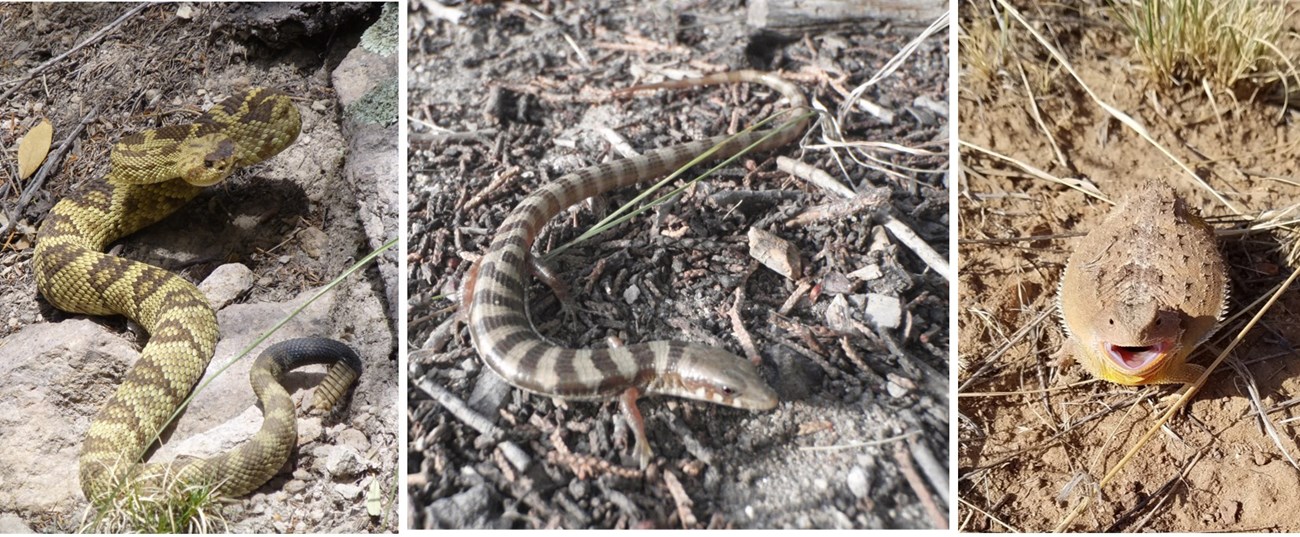
NPS/ H. Fitting & K. Whitney If you are lucky, you might see a western box turtle wandering through the grassland near the Bonita Creek picnic area. The box turtle is the only “dry-land” turtle found in this part of Arizona, and has a striped, domed shell that can close up completely to protect the occupant from harm. Although smaller than the desert tortoise of the Sonoran and Mohave deserts, the box turtle is still highly visible during warm weather. If it’s snakes that you are looking for, Chiricahua is the place! Over 30 species can be found here, from the rare to the common, large and small, it seems this is a place that snakes can thrive. The varieties are endless - there are blacktailed and blackheaded, patchnosed, hognosed, or hooknosed , ringneck or blacknecked, checkered or spotted, blind, green or glossy. It would seem that snakes are everywhere, and yet they are seldom seen. Drive carefully, that stick on the road might just be a snake! Most are harmless to humans, but there are several kinds of rattlesnakes here, as well as the western coralsnake, which are venemous. Look but don’t touch is a good rule to follow if you should happen upon a snake of any kind. Snakes keep to themselves and most will slither rapidly away when approached by humans. Although they are feared by many people, snakes seldom pose a threat to humans, unless they are being pursued. Snakes play an important role in the ecosystem by eating rodents, as well as other small animals and insects, and they are also food for many predators, including large birds of prey. A complete list of all the plant and animal species in the monument. Discover the state of reptiles (and amphibians) in the southwest. |
Last updated: January 27, 2019
